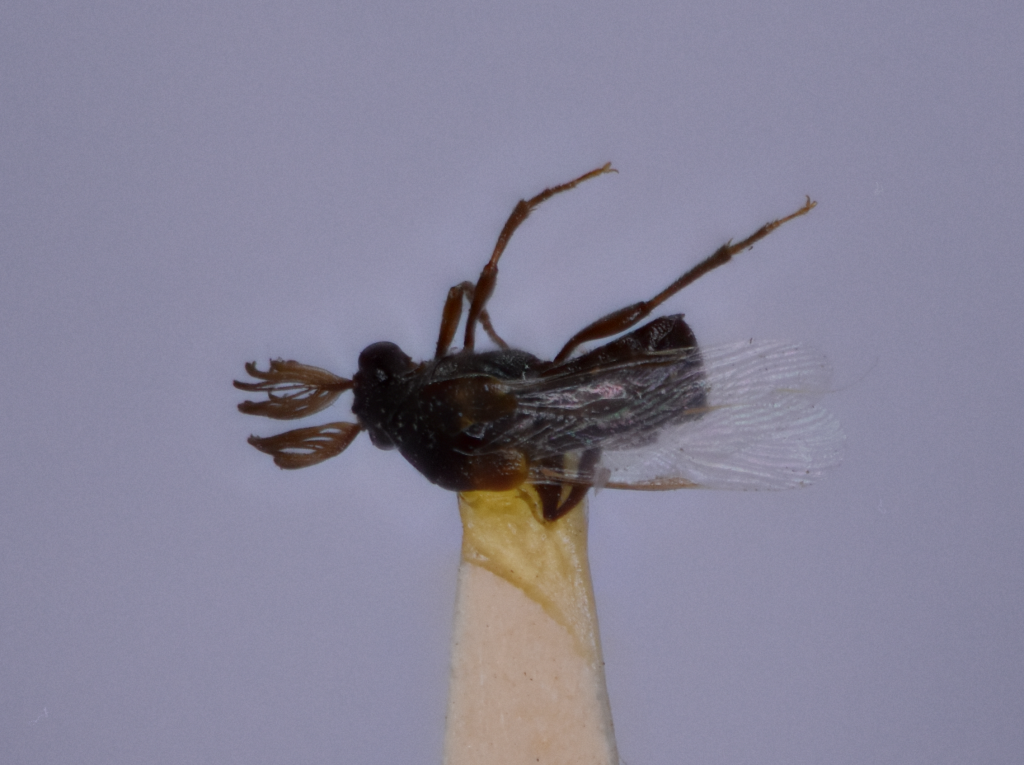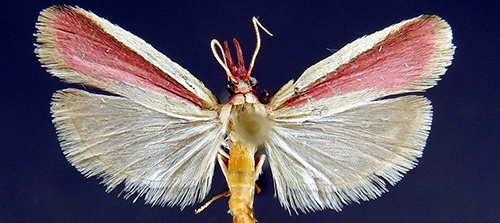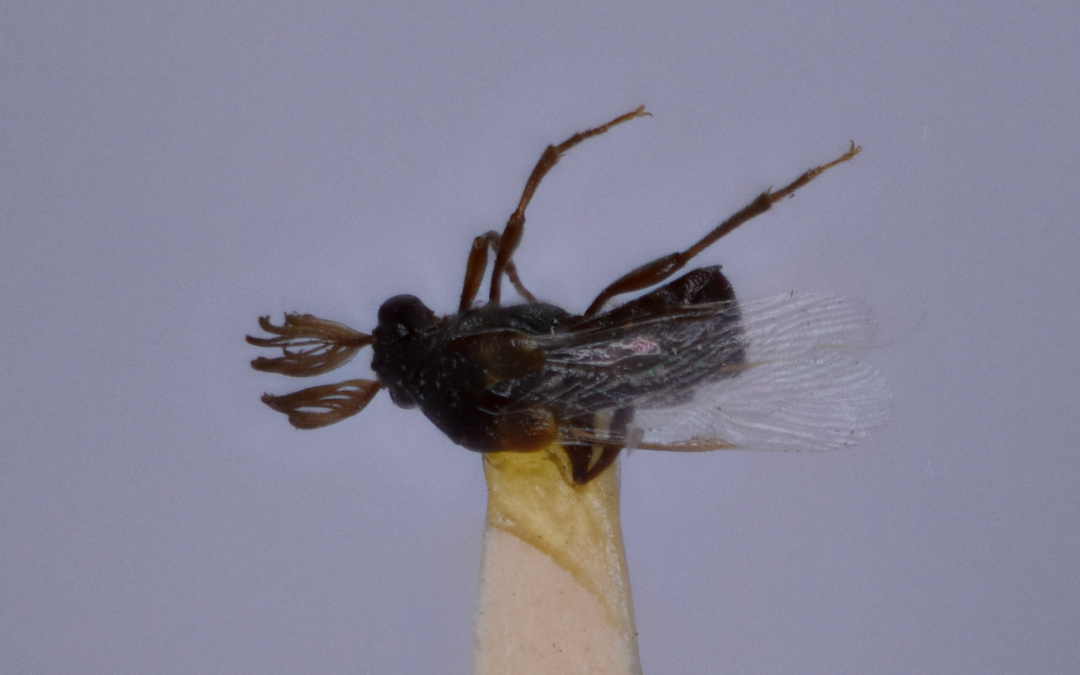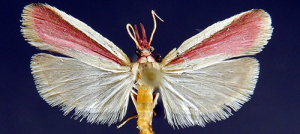For our insect of the week for March 10, 2025, we turn our attention to one of the more bizarre orders found in central Illinois – the Strepsiptera. These are rarely encountered (fun fact – I only have 2 in my collection – 1 male and 1 female). The specimen in this stacked photograph is a male collected by our former member, Gordon Adams, in August, 1973 (Peoria Co.). Ok, Mark – what is it? This is the insect, Xenos peckii, described by Kirby in 1813. It is placed in the family Xenidae.
There are roughly 600 species known worldwide and they are classified into 11 families. They are endo-parasites of other insects (such as bees, wasps, and cockroaches). The female never leaves her host. It is thought this order is most closely related to beetles (Coleoptera). The name of the order translates to twisted wing. Although it is hard to see in this stacked photograph (I was at the limit of my macro lens when taking these photos) the front wing has been modified into a club like structure called a haltere. If you have encountered that term before, it is likely in relation to the modified hind wings of flies. Yep, halteres likely evolved twice among the insects. In both orders, they provide gyroscopic information. You will also note the antennae are very unique (termed flabellate).
Eyes in the adult male are unlike most other insects and are more similar to the trilobite group Phacopina. Unlike most insect compound eyes which individually produce a pixel of the image, eyes in Strepsiptera produce a complete image. Of course, there are only a few dozen of these eyelets.
First instar larvae are highly mobile (as they must rapidly find a host). They are roughly 230 microns in length (yes, many single celled organisms are larger). Their cerci are modified so they can jump. The tarsal claws are modified to cling to a host. Once the larva inserts itself into the host, subsequent stages are immobile.
Male mouthparts are incapable of feeding and have been modofied into sensory structures. Obviously, they must quickly find a mate and reproduce as they only live a short time as an adult. Vergin females release a pheremone (which explains why the male antennae have so many receptors).
If you are looking for the most unusual central Illinois insect, I think this one fits the bill. Yes, they are very tiny.



